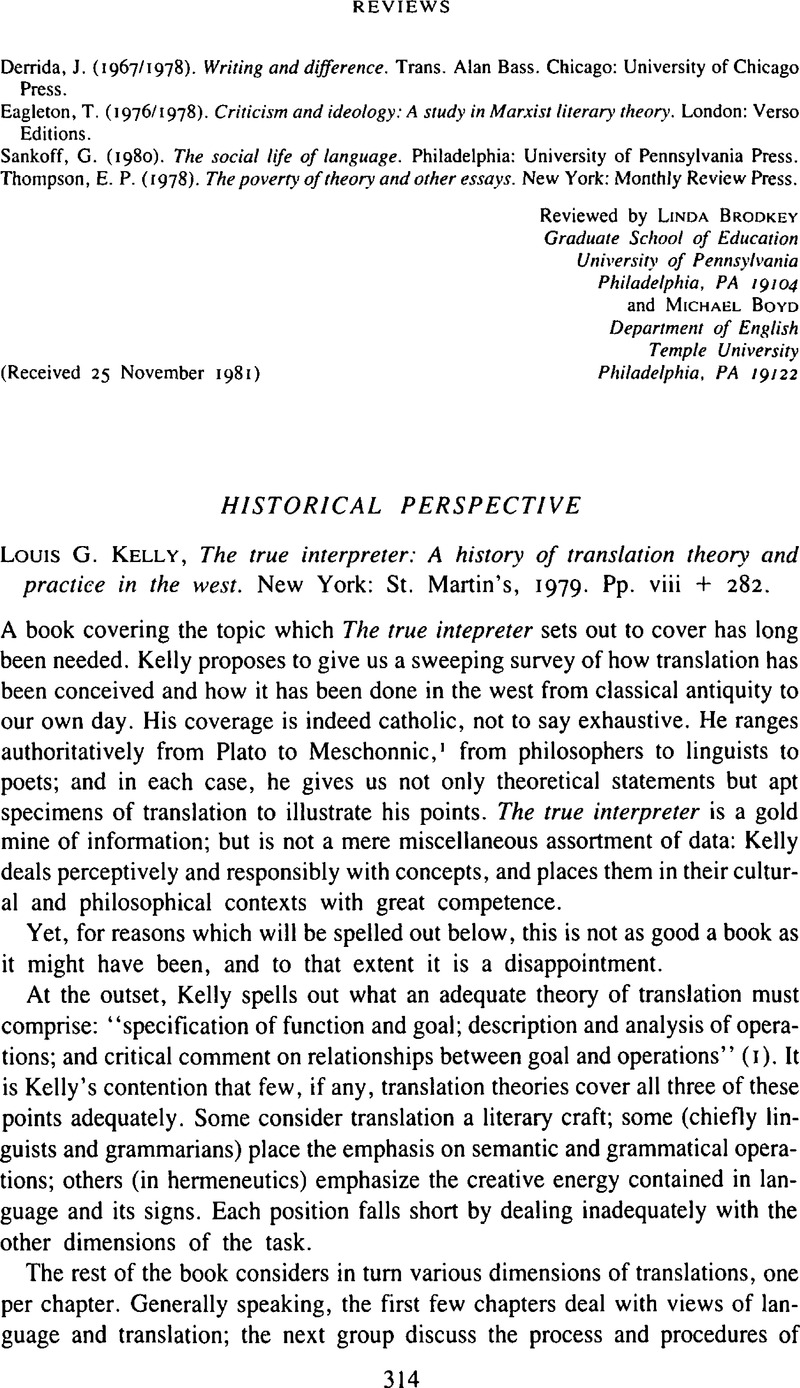No CrossRef data available.
Published online by Cambridge University Press: 18 December 2008

1. Henri Meschonnic (1932– ), French linguist and critic, author of works on poetics, translator into French of Les cinq rouleaux (Heb. Torah); is a proponent of the inseparability of signfianr and signfié, and therefore of a high degree of formal equivalence in translation. Meschonnic is a critic of Nida's dynamic equivalence. In his own translation of the Pentateuch, Meschonnic makes use of both similarities of sound and eccentric typographic arrangements to represent various formal features of Hebrew poetry. Though he in principle rejects any rendering that would strain or sprain normal French stylistics, he thinks of language as a very flexible instrument, and therefore of translation as very free to innovate creatively in imitation of an original. Philosophically, he is, in general, a follower of Walter Benjamin. Meschonnic also emphasizes the text as the unit of translation rather than the word.